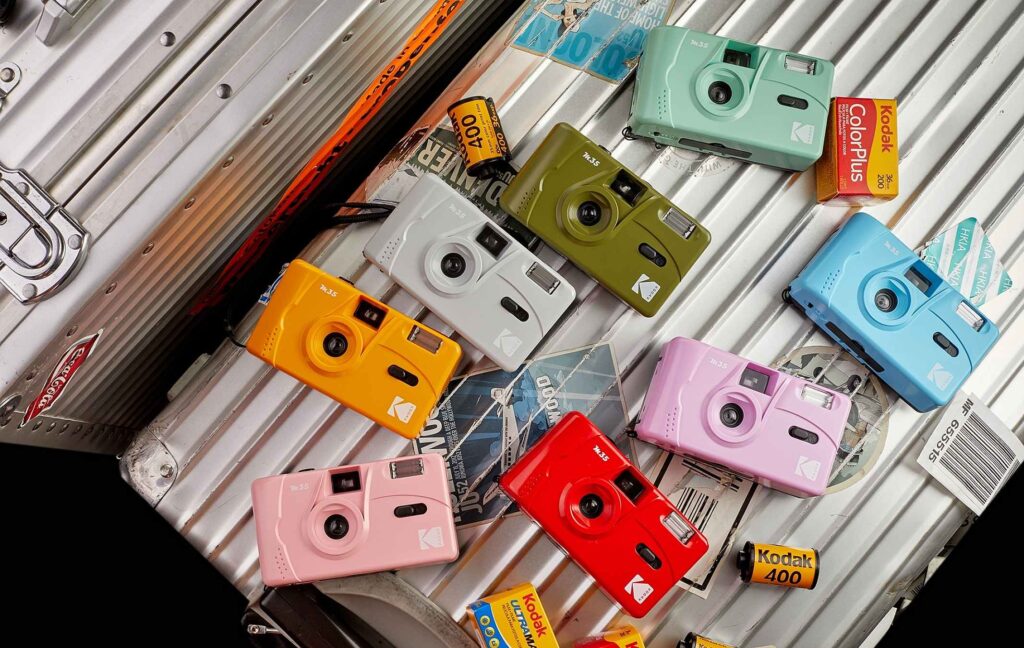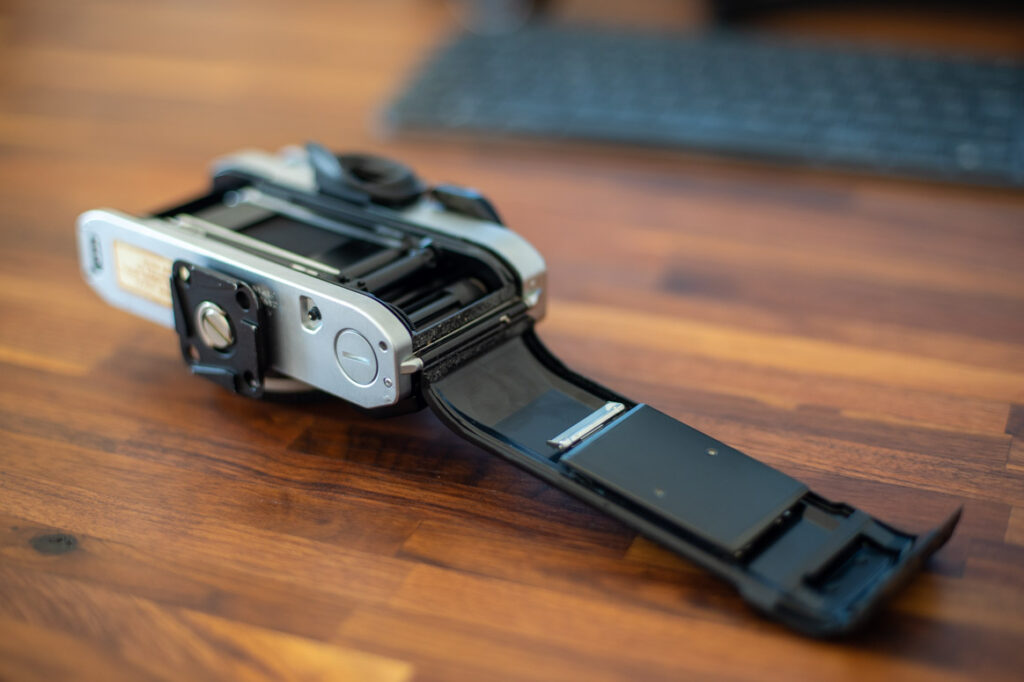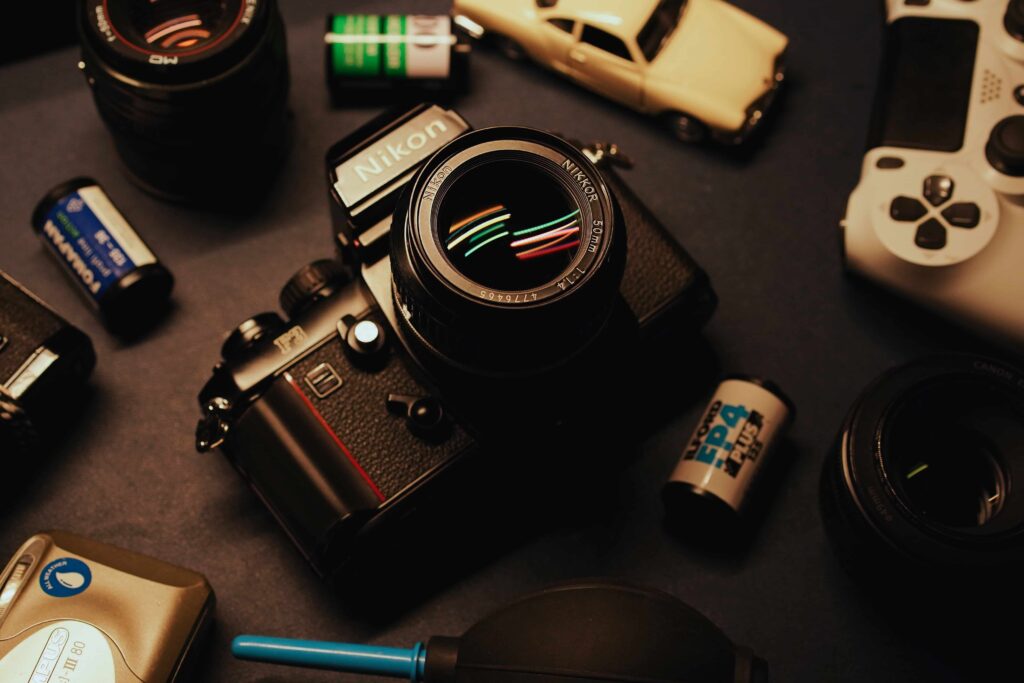The Kodak M35 and M38 are reusable film cameras, each with its unique attributes. While they do have their differences, their similarities – particularly in terms of film compatibility – make them suitable for a combined discussion. This post will detail how to select the ideal film for these specific Kodak models. We’ll explore camera specifications, ISO selection, and other factors, such as film cost, quality, and type, aiming to help you optimize your use of the Kodak M35 and M38.
For a detailed comparison between the Kodak M35 and M38, refer to our dedicated blog post here. Let’s dive into the process of picking the right film for these camera models.
Selecting the Ideal Film for the Kodak M35 and M38
Selecting the appropriate film for the Kodak M35 and M38 is about understanding these cameras’ specific features, as they can impact the final image quality. Considering the distinctive design and set features of the M35 and M38, the right film choice is crucial.
For the best results with the Kodak M35 and M38, it’s important to match the film to the camera’s specifications. These will be discussed in detail in the next section.
Understanding the Camera’s Specifications
Selecting the best film for the Kodak M35 and M38 requires a grasp of the cameras’ specifications.
Film Size: Both the M35 and M38 use 35mm film, a common format in analog photography. This opens up a broad array of film types for you to explore, including color negatives, black and white, and even slide films.
Lens and Focal Length: These cameras feature a 31mm fixed-focus wide-angle lens. “Fixed focus” implies that the lens’s focus isn’t manually adjustable. Instead, it’s set to a certain range, typically optimized to deliver clear images from roughly a meter to infinity. This feature makes the Kodak M35 and M38 adaptable for different situations like landscape, street photography, and candid shots.
Shutter Speed: Both the Kodak M35 and M38 maintain a steady shutter speed of 1/120th of a second. A “fixed” shutter speed means it cannot be changed, so the amount of light entering the camera remains consistent for each shot. This highlights the film’s light sensitivity (ISO) as a key factor in achieving correctly exposed photos.
Built-In Flash: The M35 and M38 models come with an in-built flash, which can be handy for taking pictures in low light conditions. However, this flash requires a AAA battery to operate and has a recycle time of 15 seconds. While it can be beneficial for night photography, its range is limited, which should be considered when photographing in poorly lit environments.
The Importance of ISO or Film Speed in Selecting Film for the Kodak M35 and M38
The role of ISO or film speed is crucial when deciding on a film for the Kodak M35 and M38, considering their constant shutter speed of 1/120th of a second and a 31mm f/10 fixed-focus lens. ISO indicates a film’s sensitivity to light, with a higher ISO implying greater sensitivity and vice versa. With the camera’s fixed parameters affecting light capture, ISO plays a significant role in handling different lighting scenarios.
Generally, films with an ISO rating between 200 and 400 are recommended for the Kodak M35 and M38. A 200 ISO film offers a balance between reducing the risk of overexposure and maintaining color and detail accuracy in bright outdoor daylight conditions. It’s a good choice for those seeking a more forgiving film that can adapt to changing light conditions.
On the other hand, a 400 ISO film is more beneficial in lower light conditions, providing higher light sensitivity. It’s important to note, however, that a higher ISO can result in more graininess in your photos. Depending on your personal taste, this could add a unique vintage charm or potentially detract from the image quality if a sharper, more detailed look is desired. As a result, understanding your shooting environment and the visual effect you wish to create is vital when choosing the right film for the Kodak M35 and M38.
The Sunny 16 Rule and the Kodak M35 and M38
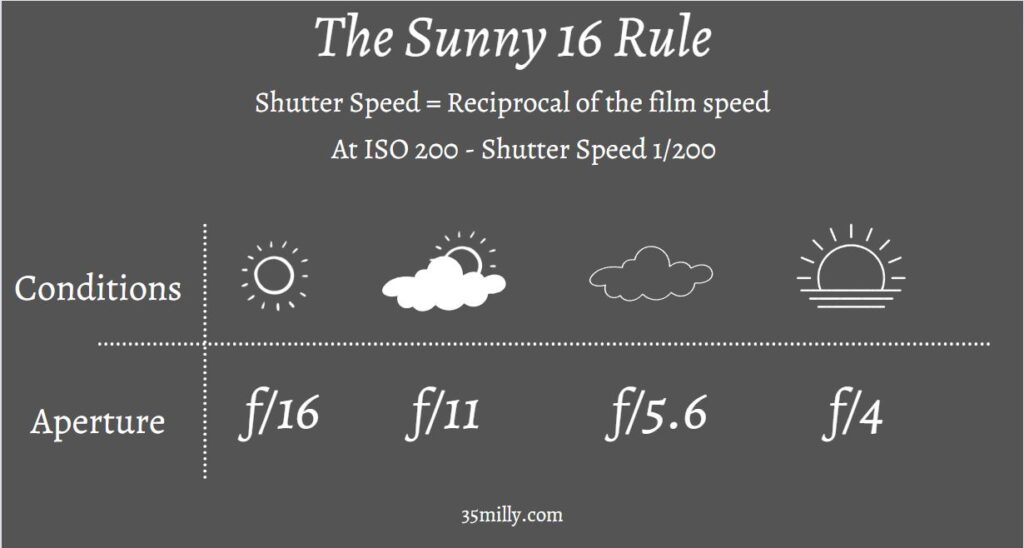
The Sunny 16 Rule is a useful guideline that helps photographers to gauge the correct daylight exposures without needing a light meter. Considering the fixed aperture of f/10 and shutter speed of 1/120th of a second in the Kodak M35 and M38, this rule is especially relevant. Essentially, the Sunny 16 Rule offers a practical reference for selecting the suitable ISO film based on the lighting conditions. With the Kodak M35 and M38, your choice of ISO becomes the primary factor in ensuring appropriate exposure. Here’s a simplified guide:
| Aperture | Shutter Speed | ISO Film | Lighting Condition | Shadow Detail |
|---|---|---|---|---|
| f/10 | 1/120 | 200 | Bright sun, snow/sand | Dark with sharp edges |
| f/10 | 1/120 | 200 | Sunny, distinct shadows | Distinct |
| f/10 | 1/120 | 400 | Slightly overcast, soft shadows | Soft around edges |
| f/10 | 1/120 | 400 | Overcast, barely any shadows | Barely visible |
| f/10 | 1/120 | 800 | Heavy overcast, no shadows | No shadows |
| f/10 | 1/120 | 800 | Open shade/sunset/indoors | No shadows |
This table illustrates how different lighting conditions and ISO film speeds interact with the fixed aperture and shutter speed of the Kodak M35 and M38. The recommended ISO film speeds and corresponding lighting conditions should serve as starting points, with adjustments made based on your particular situation and experience.
Beyond the Sunny 16 Rule, a light meter app on your smartphone can also be a helpful tool in determining the correct exposure. By setting the app to f/10 and the ISO of your chosen film, you can assess how far the camera’s exposure varies from the suggested shutter speed, assisting in making informed decisions when taking photos.
Understanding the Concept of Exposure Latitude and its Importance for the Kodak M35 and M38
Exposure latitude refers to the ability of a film to handle variations in exposure while still producing an acceptable image. It’s measured in ‘stops’, where each stop represents a doubling or halving of the amount of light. A film with a wide exposure latitude can better manage exposure changes, a feature that becomes crucial when using cameras like the Kodak M35 and M38 with their fixed settings.
Films capable of effectively handling overexposure are particularly valuable, as they generally cope with overexposure better than underexposure. As such, a film that can tolerate exposure levels three stops too bright or too dark and still produce a good quality image can be advantageous. This flexibility is particularly beneficial when using the Kodak M35 and M38, especially for those new to film photography or in situations where lighting conditions are uncertain. However, it’s important to note that not all films have the same exposure latitude. For instance, slide films may have a narrower exposure latitude, making them less forgiving in tricky lighting conditions. Hence, becoming familiar with the exposure latitude of your chosen film can greatly enhance your experience with the Kodak M35 and M38.
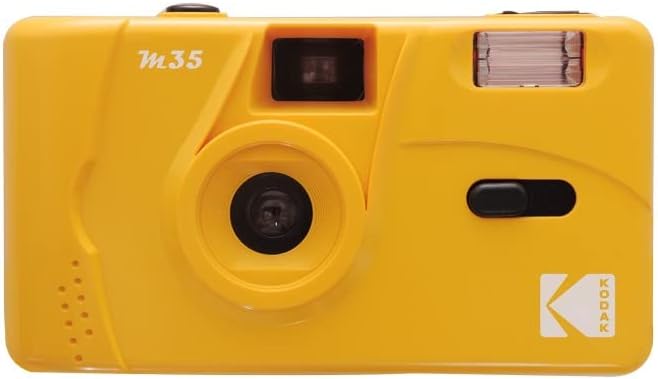
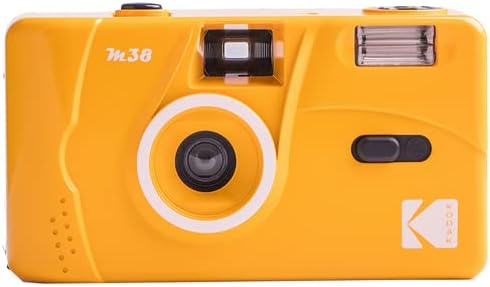
Balancing Cost and Quality for the Kodak M35 and M38
The Kodak M35 and M38, with their straightforward design and functionality, inspire photographers to celebrate spontaneity and creativity. Their compact size makes them perfect companions for all kinds of adventures, encouraging you to capture moments as they occur.
Considering the user-friendly nature of these cameras, it might be wise to choose more budget-friendly or even unconventional film types. These economical options offer a great deal of room for exploration and experimentation, removing the worry of wasting expensive film on less-than-perfect shots. Plus, these types of films can often lend a unique look to your photos, adding to the charm of the Kodak M35 and M38.
However, if you’d rather reserve your premium, high-end films for a camera with more adjustable settings, such as a fully-featured SLR, that’s entirely understandable. Remember, there are no rigid rules when it comes to choosing film for the Kodak M35 and M38. Your decision should be guided by your personal preferences, the photographic style you’re aiming for, and, of course, your budget.
Processing and Digitizing for the Kodak M35 and M38
The journey with the Kodak M35 and M38 doesn’t end once you’ve captured your images; processing and digitizing your film are key parts of the entire experience. There are two primary approaches you can take when it comes to processing your film: you can choose the DIY route at home, which requires certain equipment and knowledge, or you can leave your film in the hands of a professional lab. Similarly, the digitization process – converting your negatives into digital files – can be done at home with a film scanner or professionally in a lab. It’s important to remember that the settings used during digitization can significantly influence the final appearance of your photos.
If you decide to entrust a lab with processing and digitizing your film, make sure to ask about their pricing. Understanding the costs involved is essential to avoid any unexpected surprises.
Getting Familiar with Diverse Film Categories: Color, Black and White, and Slide Film for the Kodak M35 and M38
Color Negative Film: This category of film is sturdy and versatile, making it appropriate for a range of scenarios. Noted for its tolerance of overexposure and decent exposure latitude, color negative film could be an excellent choice for the Kodak M35 and M38. Films like Kodak Ultramax 400 or Agfa Vista 200 fall into this category. If you’re thinking of using premium color film, remember to balance the cost with the practicality of using it in a camera with fixed settings like the M35 and M38.
Black and White Film: If you’re drawn to monochrome images, black and white film produces photos with distinct depth and texture. It’s usually affordable and a great choice for beginners interested in processing their own film, as the process is simpler than with color film. With a good exposure latitude and a variety of budget-friendly options from brands like Ilford, Kodak, and Foma, black and white film provides a flexible option for the Kodak M35 and M38.
Slide Film: While slide film can produce impressively vibrant and detailed photographs, it might not be the best choice for the Kodak M35 and M38. Its narrow exposure latitude and higher cost might not be ideal for a camera where you can’t manually adjust the aperture or shutter speed. Consequently, the resulting images might not fully leverage the potential of slide film, making it a potentially less cost-effective option for the Kodak M35 and M38.
Best Film Options for the Kodak M35 and M38
Color Films
Fujifilm Fujicolor 100: A strong choice for bright light photography, Fujicolor 100 delivers realistic, vibrant colors while keeping grain at minimal levels. With its low ISO, it assures that your outdoor photos will be detailed and grain-free. This film has a relatively narrow exposure latitude and may be a better match for seasoned photographers who can expertly judge light conditions. See current prices here.
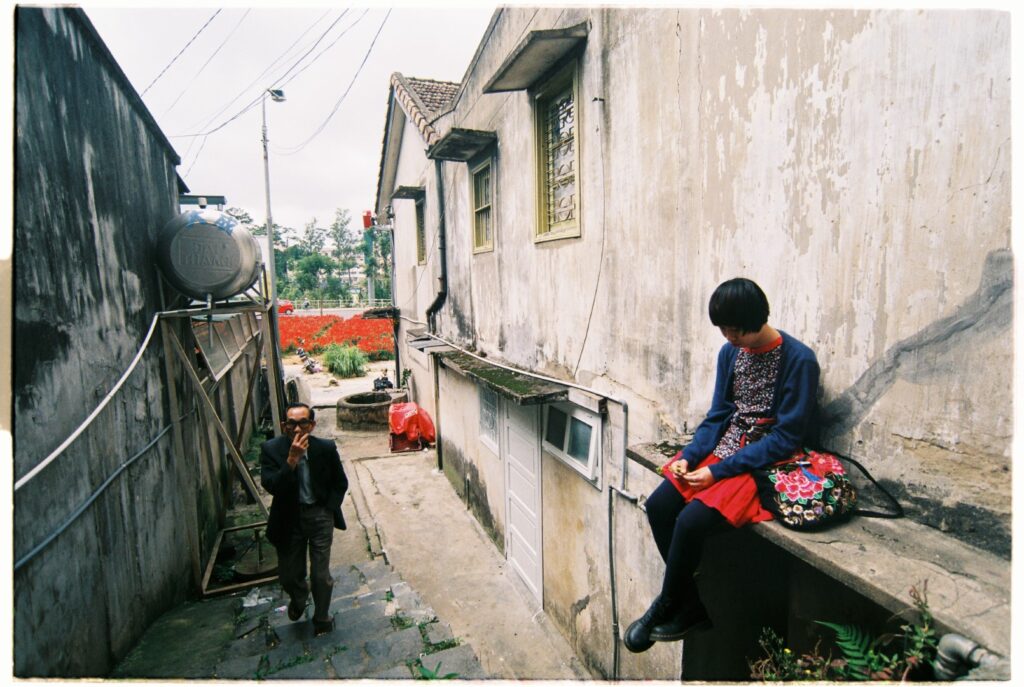
Kodak Gold 200: This versatile and user-friendly film strikes a suitable balance between light sensitivity and grain presence. It has a broader exposure latitude compared to Fujicolor 100, making it a more flexible choice for spontaneous shoots. The ISO 200 rating pairs well with the Kodak M35 and M38’s fixed aperture and shutter speed, offering a degree of adaptability even under less than ideal lighting conditions. This film is notable for its fine grain, which results in sharper images when printed or viewed at full-frame photo size. It’s a film that beginners should definitely try. Check current prices here.
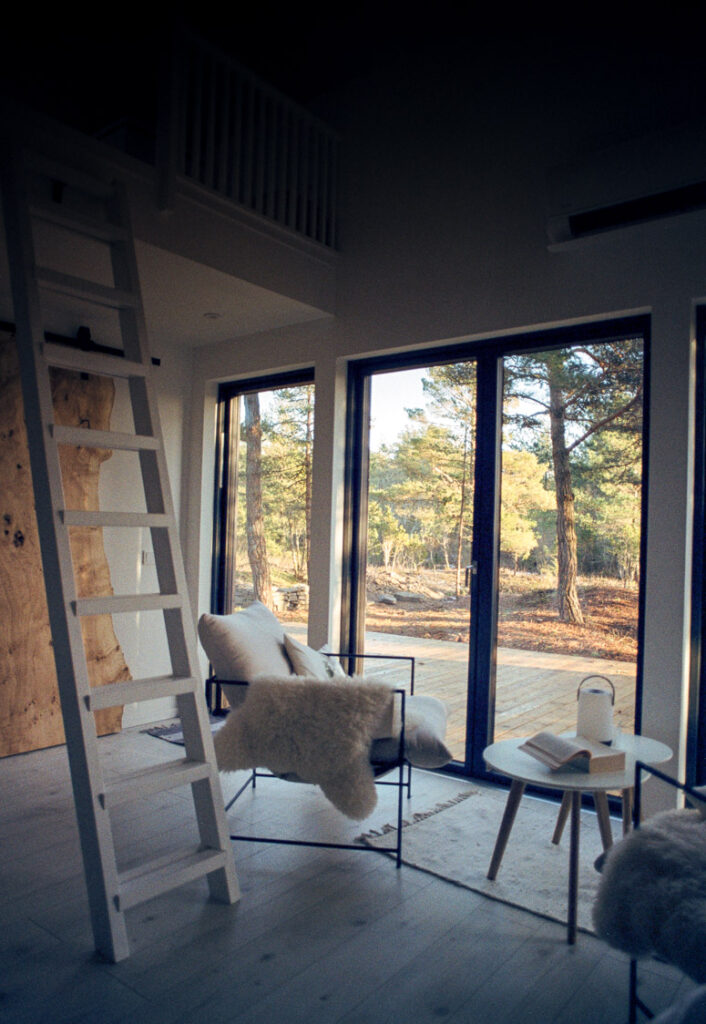
Lomography 400 Color Negative: This film is suitable for photographers working in varied or dimly lit conditions, as its higher ISO rating provides increased versatility. As the ISO increases, images also display increased grain, which can add an artistic touch, enhancing the nostalgic charm of your shots. This film boasts a broad exposure latitude, making it more forgiving of exposure errors, a beneficial attribute given the Kodak M35 and M38’s fixed settings. It’s worth noting that the grain might be more pronounced, but this can give your photos a unique, retro aesthetic. Check current prices here.
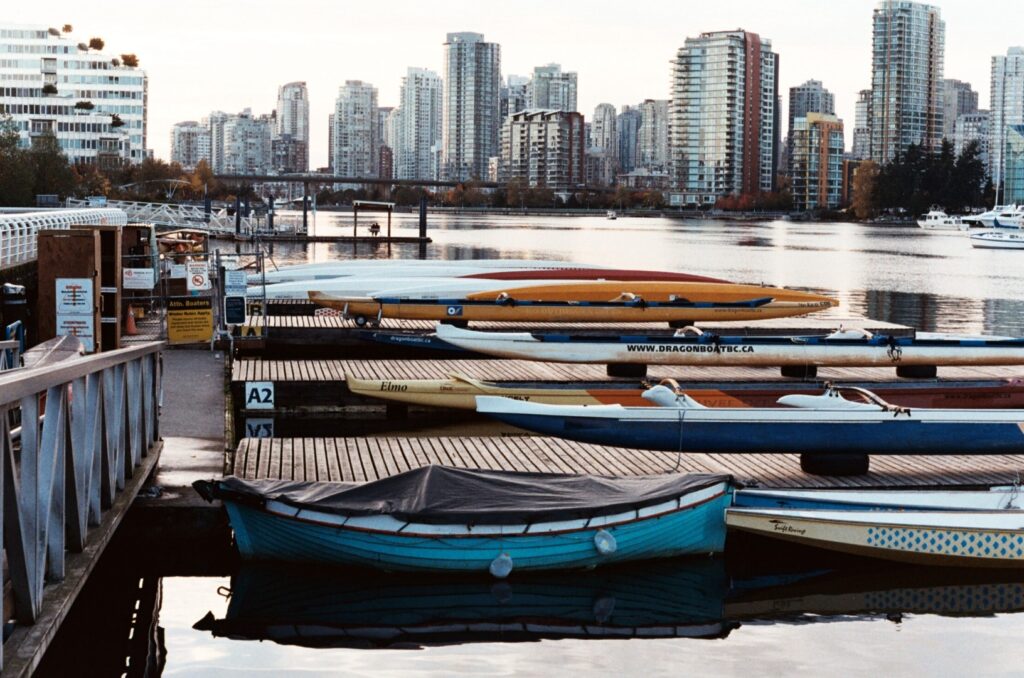
Black and White Films
Ilford Pan F Plus 50: Distinguished by its extraordinarily fine grain and superior resolution, this film produces sharp, detailed images, particularly in well-lit situations. While its lower ISO rating may seem challenging, it pairs well with the Kodak M35 and M38 under appropriate lighting conditions. This film delivers images with excellent contrast and a wide tonal range. However, keep in mind it has a relatively narrow exposure latitude, requiring precise exposure. It’s a perfect selection for sunny days when you aim to capture detailed, high-contrast black and white images. Check current prices here.
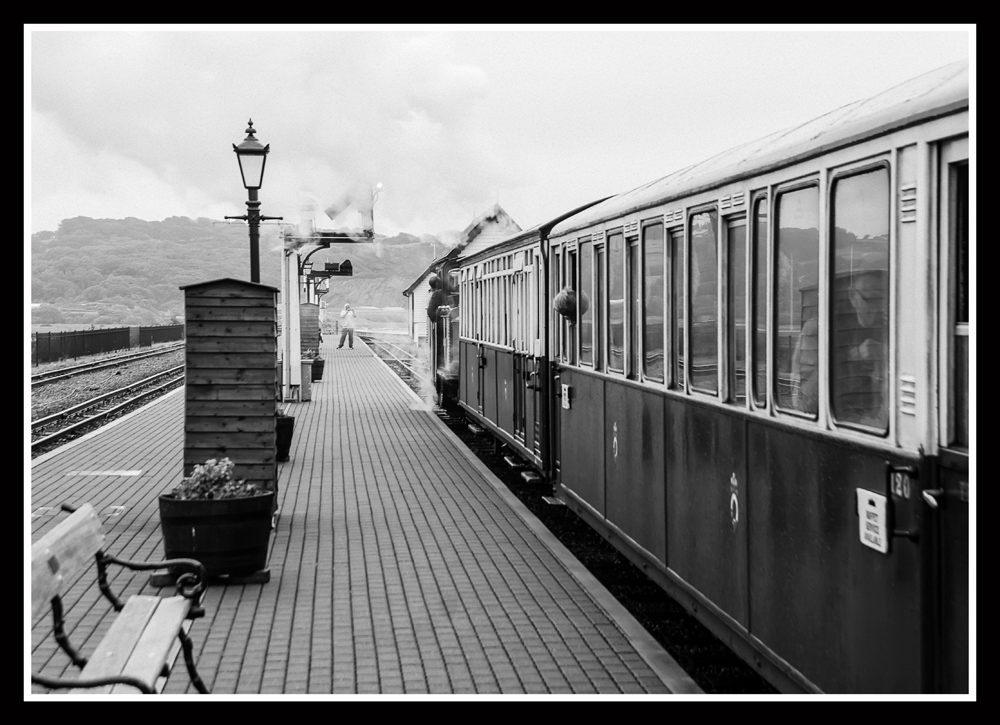
Fomapan 200 Creative: If you’re after a unique artistic feel, Fomapan 200 Creative could be your first choice. Famous for its fine grain, high sharpness, and pleasing contrast levels, it also offers a generous exposure latitude. This lenient characteristic is a significant advantage when operating with the Kodak M35 and M38’s fixed settings. You can achieve appealing results in a wide array of lighting conditions, from bright outdoor settings to somewhat dimmer environments. Its ISO 200 rating allows a fair degree of flexibility, producing relatively sharp images without excessive grain. Check current prices here.
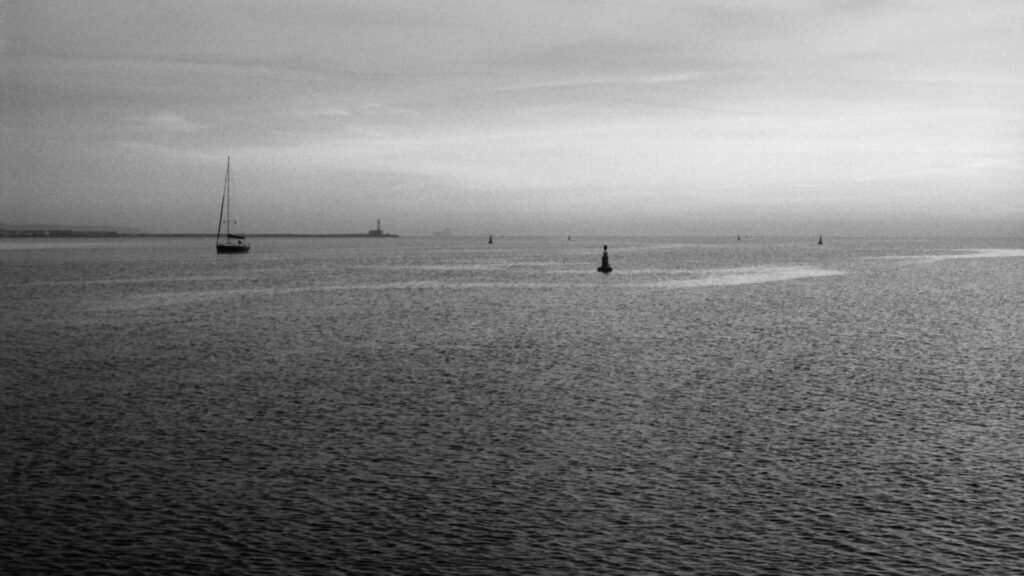
Kentmere 400: An economical choice for those concerned about cost but still desiring high-quality results. Kentmere 400, manufactured by Harman Technology (the same company behind Ilford films), is acknowledged for its fine grain and exceptional sharpness. With its ISO 400 rating, it provides versatility, making it a suitable choice for the Kodak M35 and M38 across varied lighting conditions. While it may not be as well-known as Kodak Tri-X, it competes strongly in terms of image quality, offering a high degree of detail and contrast. With its reasonable pricing and strong performance, it’s a top pick for photographers experimenting with the Kodak M35 and M38. Check current prices here.

Experimental Film Choices
Lomography LomoChrome Purple XR 100-400: Seeking a unique flair? This film might be just what you need. LomoChrome Purple XR 100-400 miraculously turns green hues into captivating purples, creating a dreamlike effect. If you’re eager to experiment and infuse a bit of fantasy into your images, this film is a superb choice. Check current prices here.
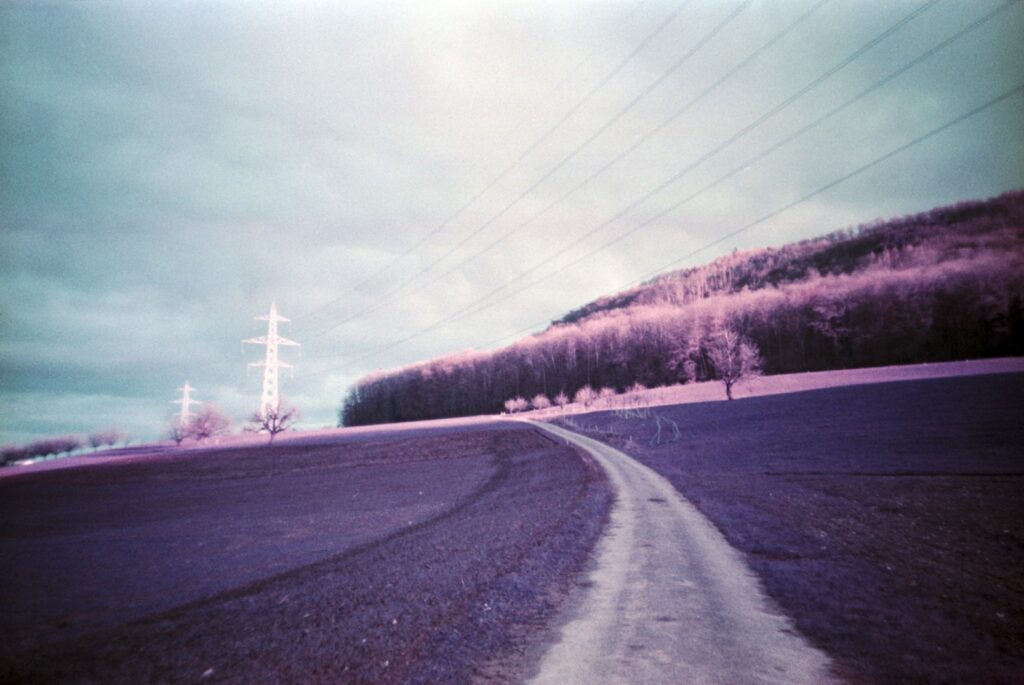
Revolog Kolor: Craving whimsical and surprising results? Revolog Kolor imbues your photos with random color effects and streaks, bestowing a unique allure upon each image. It’s ideal for photographers who value spontaneity and creativity in their shots. Check current prices here.
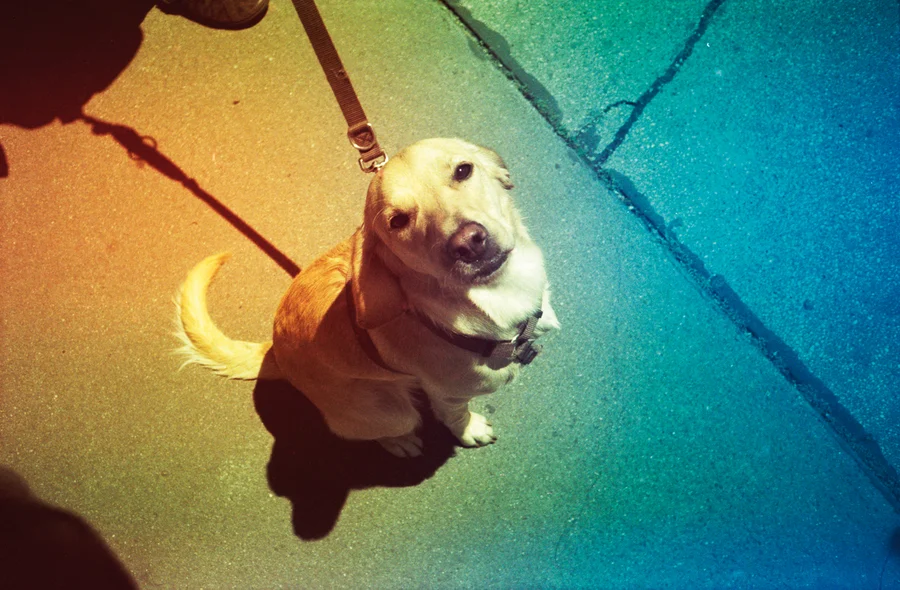
KONO! Monolit: This is far from your ordinary black and white film. KONO! Monolit has been pre-exposed to create high-contrast, compelling effects, adding a surreal twist to your shots. If you’re keen to push boundaries with your Kodak M35 or M38 and create visually striking and unexpected images, this film will add an additional layer of excitement to your photographic journey. Check current prices here.

Selecting the Perfect Film: Where to Purchase
There are various options to consider when purchasing film for your Kodak M35 or M38:
Amazon: With its broad selection of film stocks from a wide array of producers, Amazon is an ideal place to kick-start your film shopping journey. It offers competitive prices, useful customer feedback, and the convenience of delivery to your doorstep. You can comfortably browse and select the most fitting film for your camera from the comfort of your home.
eBay: If you’re in search of unusual or discontinued film stocks, eBay might be your perfect marketplace. It’s also a great place to find deals on film. However, it’s crucial to buy from reputable sellers to avoid potential issues with film quality.
Specialized Online Stores: Websites dedicated to film photography, such as The Film Photography Project, Freestyle Photographic Supplies, and Analogue Wonderland, provide an extensive range of film types. These platforms not only offer a vast variety, including rarer and experimental films, but also provide valuable insights on film photography, further enriching your photography experience.
Local Camera Stores: Don’t overlook your local camera shops and specialized photography stores. While their selection might not be as wide-ranging as online platforms, these stores offer the advantage of direct advice from seasoned professionals. Their knowledgeable staff can assist you in choosing the right film for your Kodak M35 or M38.
Regardless of where you procure your film, it’s vital to ensure it has been stored correctly—in a cool, dry environment—and to always check its expiry date. Utilizing film before its expiration date will increase your chances of obtaining the best possible results.
Frequently Asked Questions about Film Usage in the Kodak M35 and M38
Can I load black and white film into my Kodak M35 and M38?
Yes, you can certainly load black and white film into your Kodak M35 and M38. These cameras are designed to work well with a variety of film types. Black and white film can give your images a classic, timeless appeal with its unique textures and tonal range.
Can I incorporate slide film with the Kodak M35 and M38?
You can use slide film with the Kodak M35 and M38. However, slide film has a narrow exposure latitude and may not provide optimal results with these cameras’ fixed settings. It’s best used by more experienced photographers who can accurately assess light conditions.
What is the ideal ISO setting for the Kodak M35 and M38?
Considering the fixed aperture and shutter speed of the Kodak M35 and M38, an ISO 200 film would be a good general-purpose choice. It’s versatile enough to work well in a range of light conditions. However, you might opt for higher ISO films such as ISO 400 for low-light conditions or lower ISO films such as ISO 100 for brighter outdoor environments.
Is it feasible to process film from the Kodak M35 and M38 at home?
Yes, it’s feasible to develop film from the Kodak M35 and M38 at home, especially if you’re using black and white film, which is simpler to process. This can be a rewarding part of the film photography experience, giving you complete control over the final look of your images. It does require some specific equipment and chemicals, as well as a bit of practice to get right.
What are the consequences of using expired film in the Kodak M35 and M38?
Using expired film can lead to unpredictable and sometimes creative results, including shifts in color, contrast, and grain. However, it might also result in a total loss of the image. If you’re going for a certain aesthetic or don’t mind a bit of risk, expired film can add an extra layer of intrigue to your photography.
How can I ensure top-notch image quality with my Kodak M35 and M38?
Ensuring quality images with the Kodak M35 and M38 involves choosing the right film for your lighting conditions, ensuring your film is fresh and has been stored properly, and getting your film processed at a reliable lab. Good composition and careful choice of subject matter also play a part.
Can the Kodak M35 and M38 be employed for professional photography?
While the Kodak M35 and M38 are excellent cameras for casual and experimental photography, they may not be ideal for professional use due to their limited controls. For professional photography, you may prefer a camera with adjustable aperture, shutter speed, and focus to give you more control over the final image.
Are there certain film types that pair better with the Kodak M35 compared to the M38, and vice versa?
Given that the Kodak M35 and M38 have similar technical features, there’s no specific type of film that would be more suitable for one over the other. The choice of film should instead be based on the lighting conditions you expect to encounter, your desired aesthetic, and your level of comfort with the film’s exposure latitude.
How does the choice of film influence the overall look and atmosphere in photos taken with the Kodak M35 and M38?
The choice of film can greatly influence the mood and aesthetic of your photos. For example, black and white film can lend a timeless, classic feel to your images. High-contrast film can emphasize dramatic lighting. Lower ISO films can yield finer grain and higher resolution, while higher ISO films might result in a grittier, more atmospheric feel. Color films can vary in their color balance and saturation, influencing the vibrancy of your photos. Experimenting with different film types can be a fun way to explore these effects.

